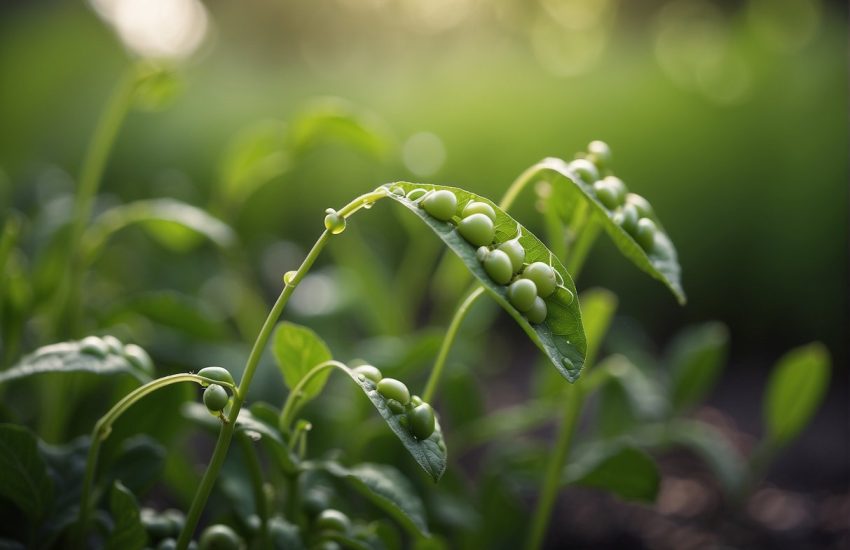Herb That Looks Like Parsley: A Guide to Identifying and Using it in Cooking
A herb that looks like parsley has been gaining popularity in recent years due to its unique flavor and health benefits. This herb, known as cilantro or coriander, is commonly used in Mexican, Indian, and Asian cuisines. With its delicate leaves and distinct aroma, cilantro has become a staple ingredient in many dishes.

Cilantro is often mistaken for parsley due to its similar appearance, but the two herbs have distinct differences in taste and texture. While parsley has a mild flavor, cilantro has a more pungent and citrusy taste that can be overpowering if used in excess. It also has a slightly different texture, with softer and more delicate leaves than parsley. Despite these differences, cilantro and parsley are often used interchangeably in recipes, leading to confusion for those who are not familiar with the herbs.
Identifying Parsley and Its Lookalikes
Visual Characteristics of Parsley
Parsley (Petroselinum crispum) is a biennial herb that belongs to the Apiaceae family. It has flat or curly leaves, which are bright green in color and are arranged in a rosette pattern. The leaves are pinnate, which means they have multiple leaflets arranged on either side of a central stem. The stems of parsley are hollow and have short white hairs. Parsley produces small white flowers in the second year of growth.
Common Parsley Confusions
Parsley is often confused with other herbs that look similar, such as cilantro (Coriandrum sativum), chervil (Anthriscus cerefolium), and carrot greens (Daucus carota). Cilantro has similar-looking leaves but they are more rounded and have a stronger aroma. Chervil has fern-like leaves and a delicate flavor. Carrot greens have a similar appearance to parsley but have a bitter taste.
Another plant that is often confused with parsley is poison hemlock (Conium maculatum). Poison hemlock has similar-looking leaves, but the stems are solid and have purple spots. The flowers of poison hemlock are white and grow in clusters. It is important to note that poison hemlock is extremely toxic and should not be consumed.
Cow parsley (Anthriscus sylvestris), queen anne’s lace (Daucus carota), and common hedge parsley (Torilis japonica) are also often mistaken for parsley. Cow parsley and queen anne’s lace have similar-looking flowers to parsley but have different leaf structures. Common hedge parsley has a similar leaf structure to parsley but has small white flowers.
Safety Precautions
While parsley is generally safe to consume, it is important to note that some people may have an allergic reaction to it. Symptoms of an allergic reaction may include skin rash, itching, and difficulty breathing. If you experience any of these symptoms after consuming parsley, seek medical attention immediately.
It is also important to note that poison hemlock is extremely toxic and should not be consumed. If you are unsure whether a plant is parsley or poison hemlock, do not consume it.
Culinary Uses and Substitutes

Parsley in World Cuisines
Parsley is a versatile herb that is used in various cuisines around the world. It is commonly used as a garnish to add a pop of green color to dishes. Parsley is also used to add flavor to soups, stews, sauces, and salads. In Mediterranean cuisine, parsley is an essential ingredient in tabbouleh, a salad made with bulgur wheat, parsley, tomatoes, onions, and lemon juice. In Italian cuisine, parsley is used in a variety of dishes, including pasta sauces, meatballs, and seafood dishes.
Selecting and Storing Fresh Herbs
When selecting fresh parsley, look for bright green leaves that are free from yellow or brown spots. The stems should be firm and not wilted. To store fresh parsley, wrap it in a damp paper towel and place it in a plastic bag. Store it in the refrigerator for up to a week.
Parsley Substitutes in Cooking
If you don’t have parsley on hand, there are several substitutes you can use in cooking. Some good substitutes for parsley include cilantro, chervil, basil, and tarragon. These herbs have a similar flavor profile to parsley and can be used in the same way. Dried parsley can also be used as a substitute for fresh parsley, but keep in mind that the flavor will be less intense.
Parsley is a nutritious herb that is rich in vitamins, minerals, and antioxidants. It is particularly high in vitamin K, which is important for blood clotting and bone health. Parsley also contains thymol, a compound that has been shown to have antibacterial properties. It may also help with blood sugar control and kidney stone prevention.
In summary, parsley is a versatile herb that is used in many different cuisines around the world. It can be used as a garnish or to add flavor to dishes. If you don’t have parsley on hand, there are several substitutes you can use. When selecting and storing fresh parsley, look for bright green leaves and firm stems. Overall, parsley is a nutritious herb that can add flavor and health benefits to your cooking.


